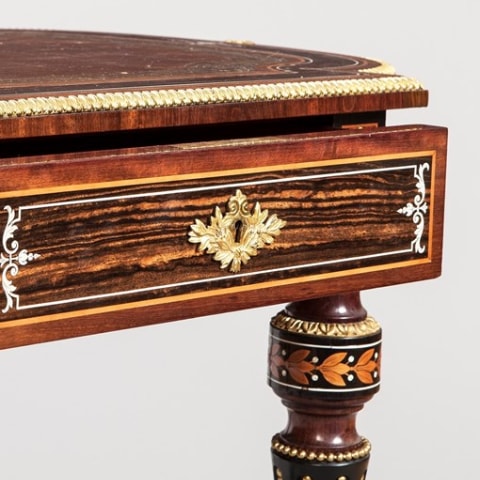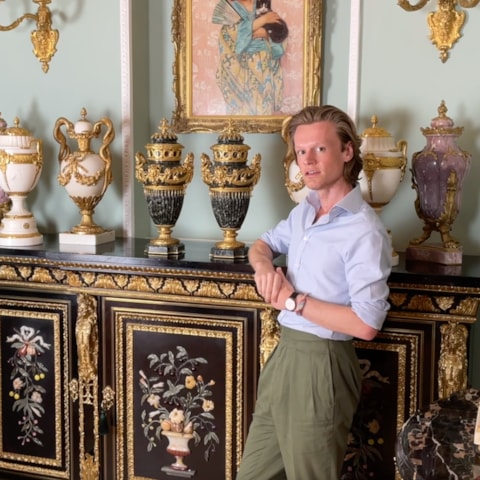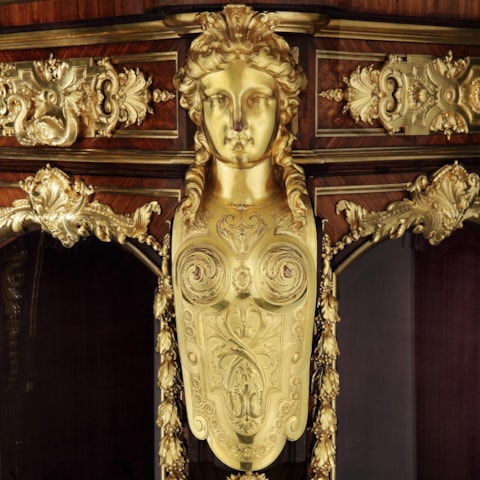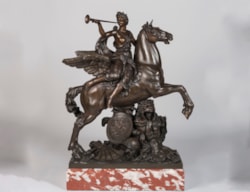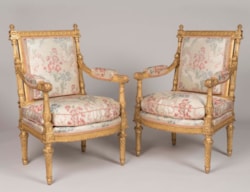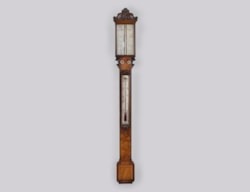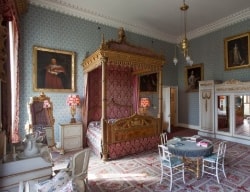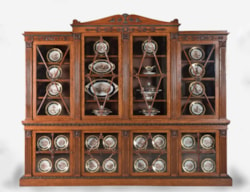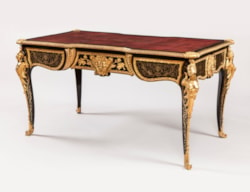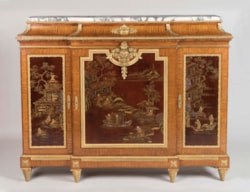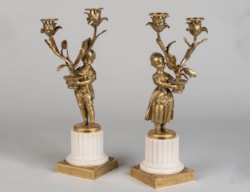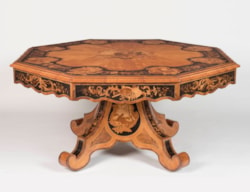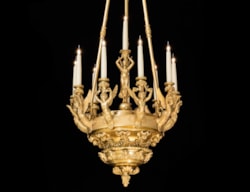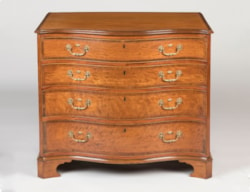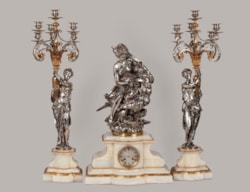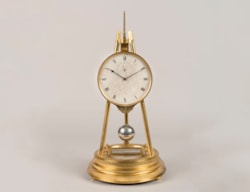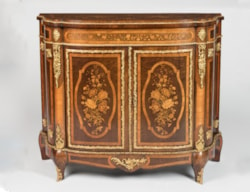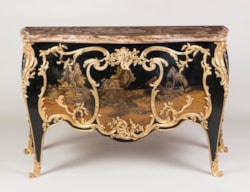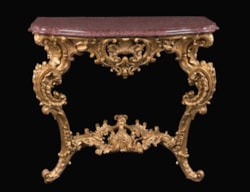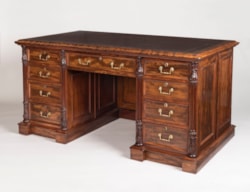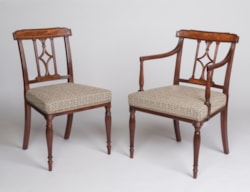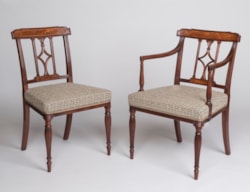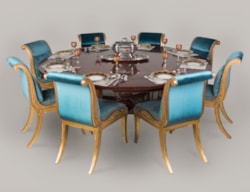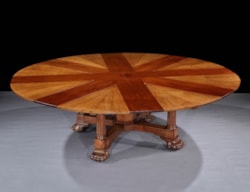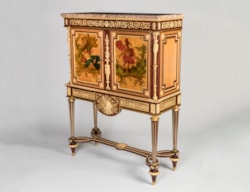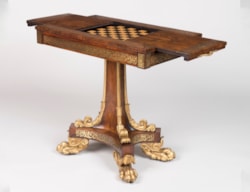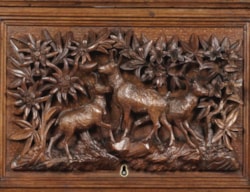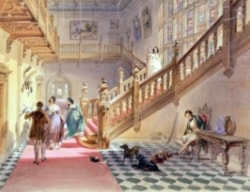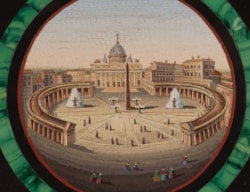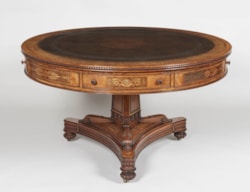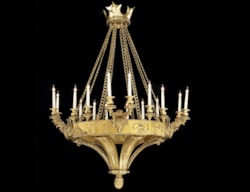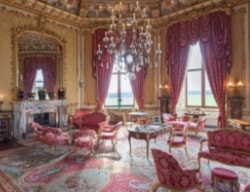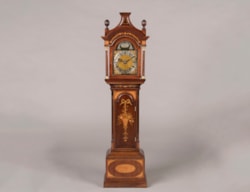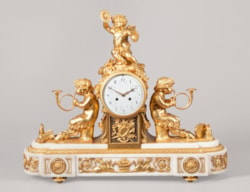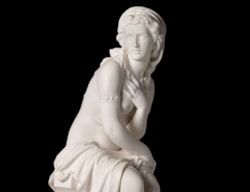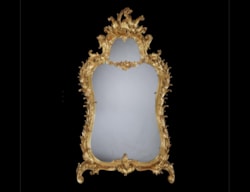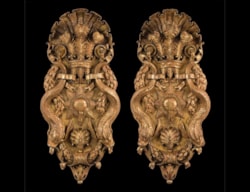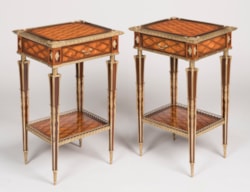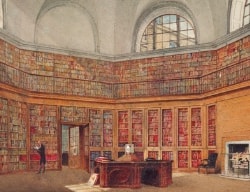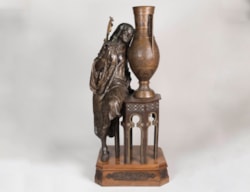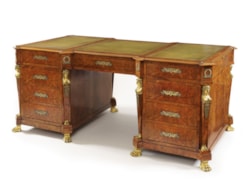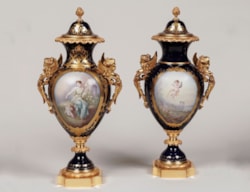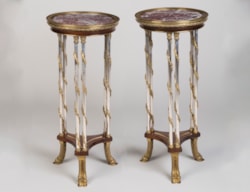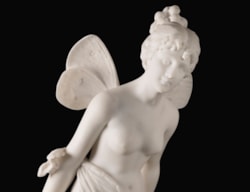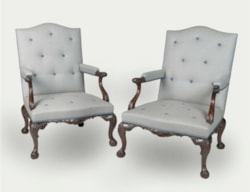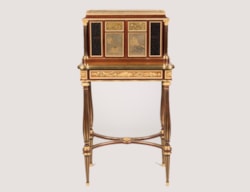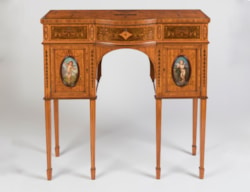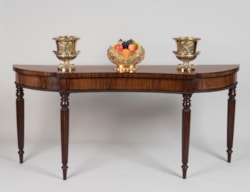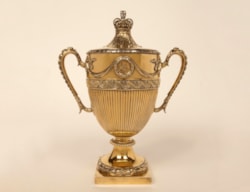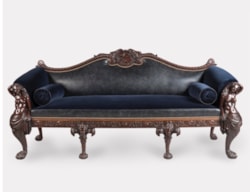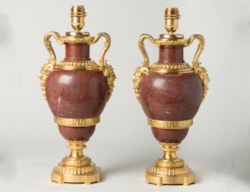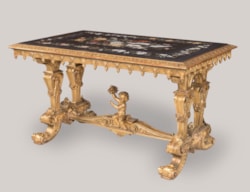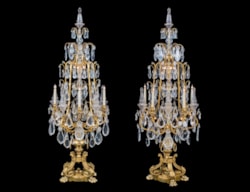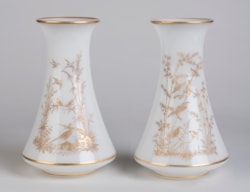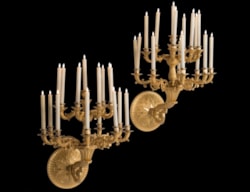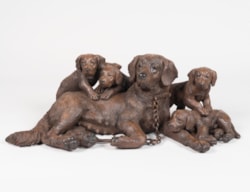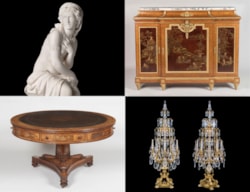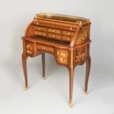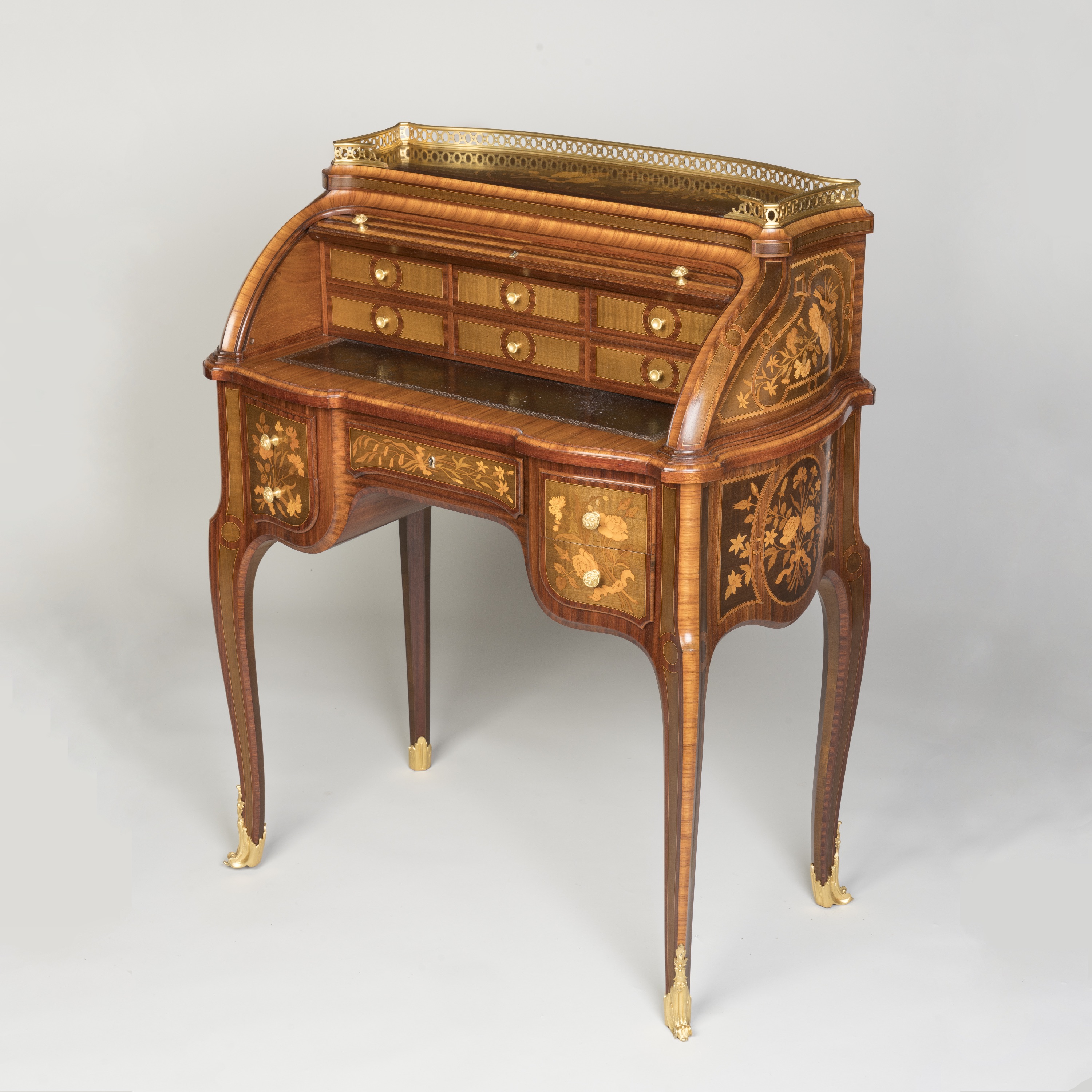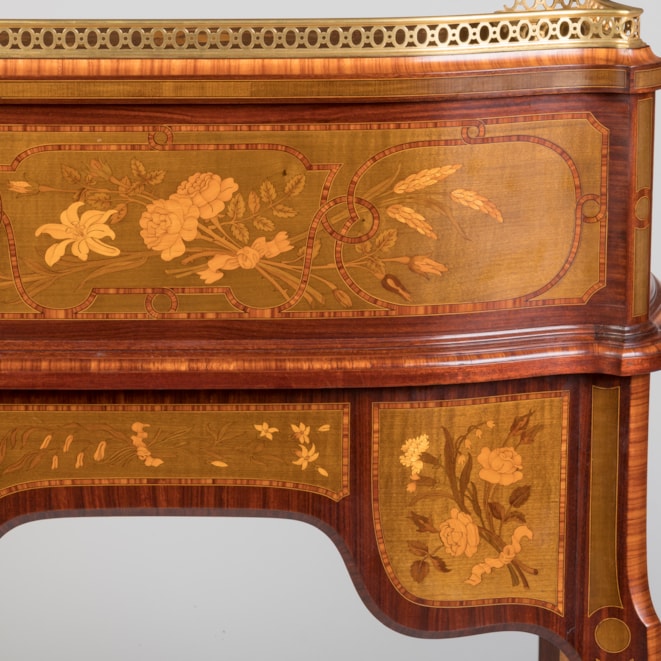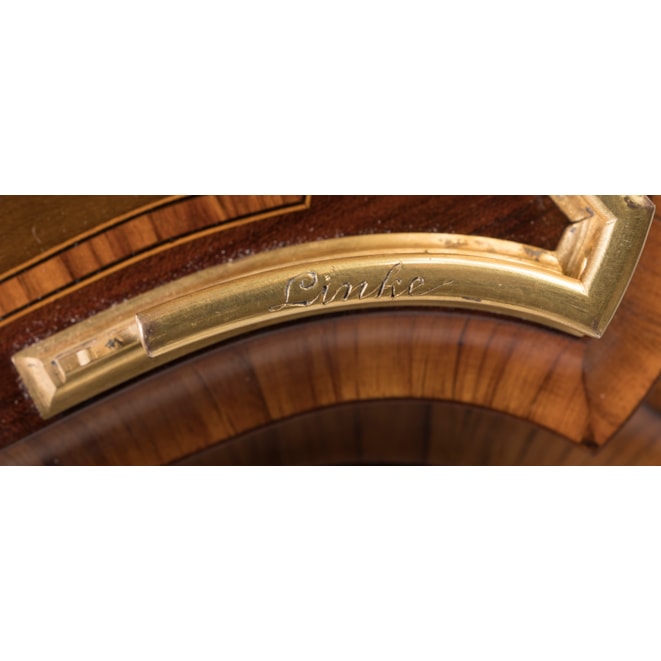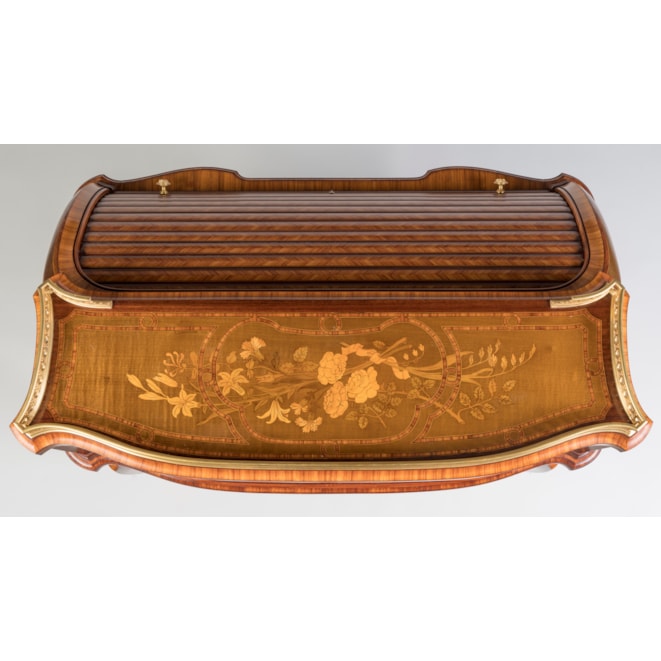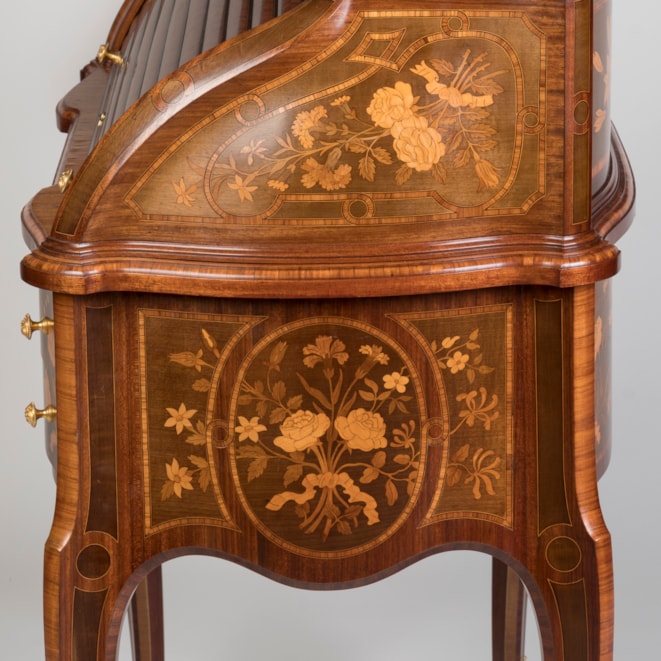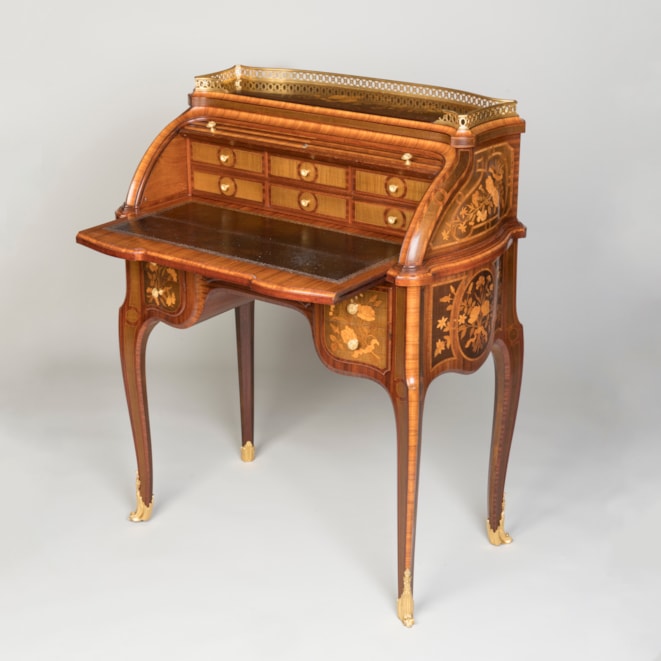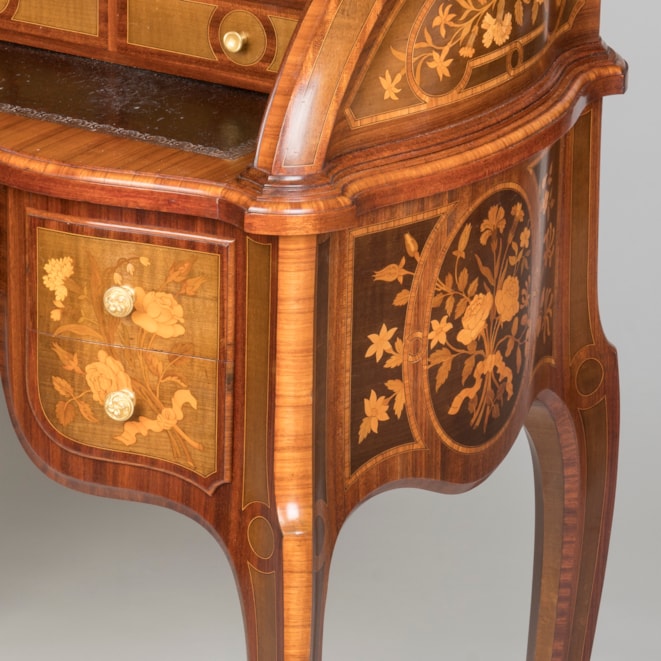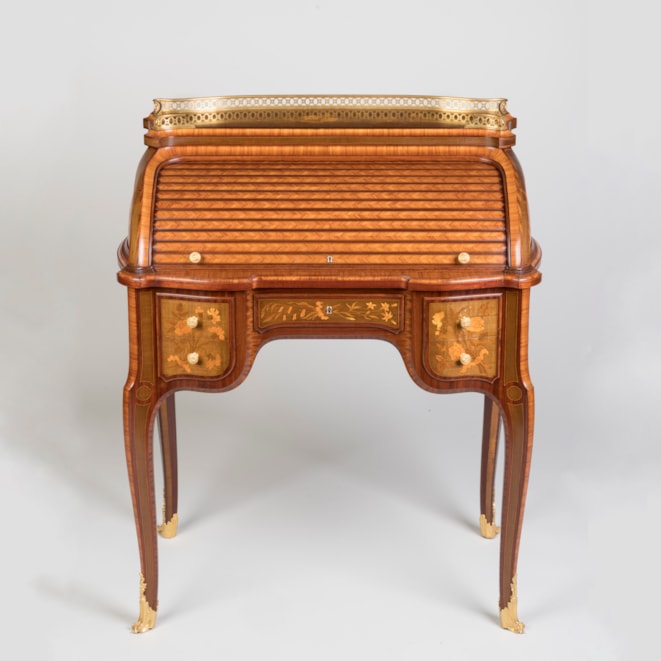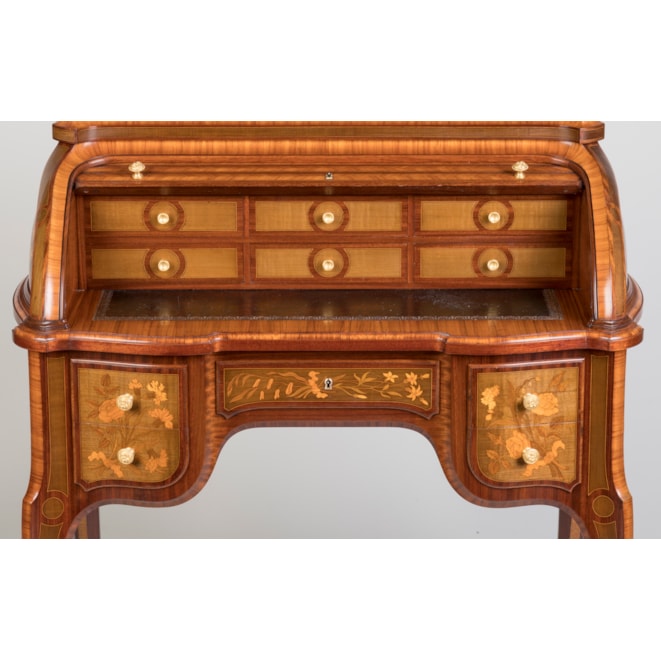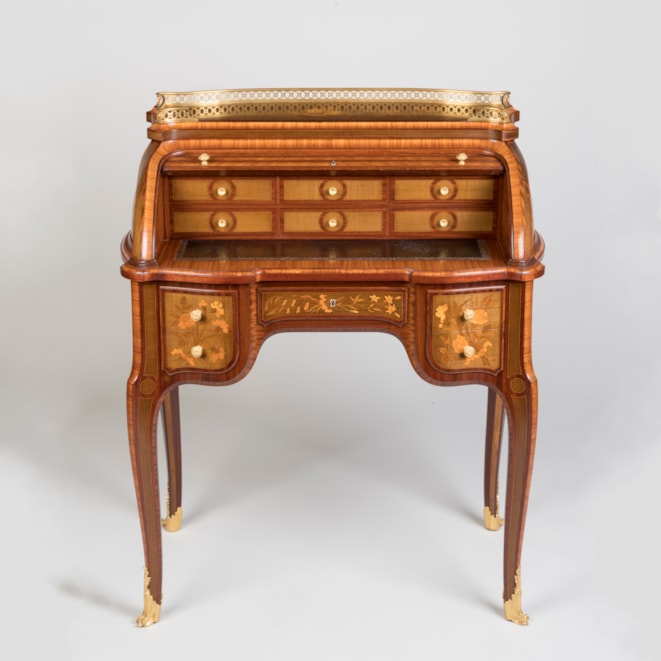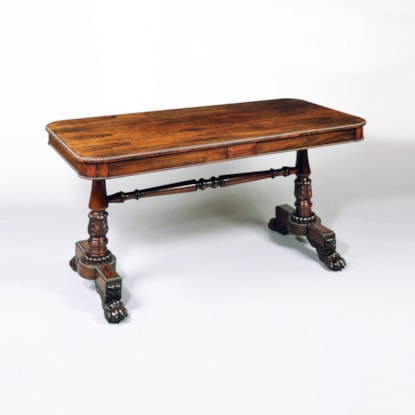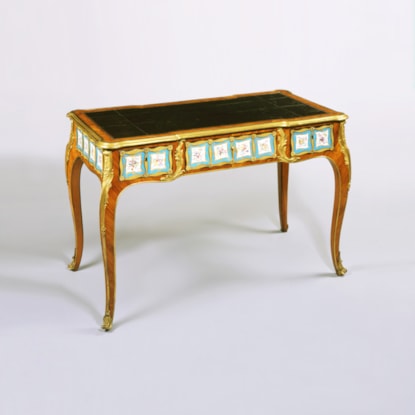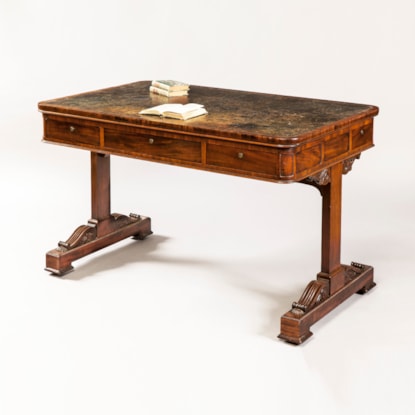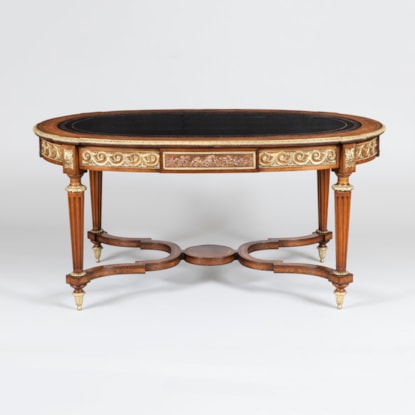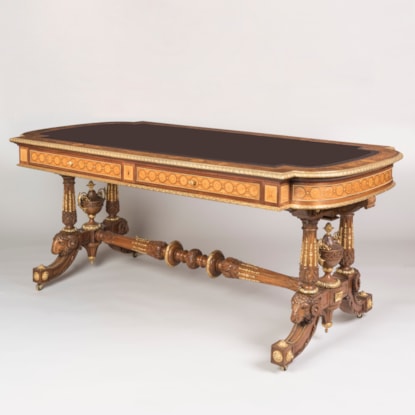Collection / Desks & Writing Furniture
A Bureau à Cylindre in the Transitional Manner by François Linke
A Bureau à Cylindre in the Transitional Manner by François Linke
Dimensions: H: 40 in / 101.5 cm | W: 32 in / 81 cm | D: 18 in / 45.5 cm
PRICE: £54,500
A Petit Bureau à Cylindre in the Transitional Manner
After the design by Jean-François Oeben
By François Linke
Index no. 1626
A rare small cylinder bureau, after the celebrated example today in the Musée Nissim de Camondo in Paris, constructed with marquetry-inlaid floral designs on a harewood ground to all sides, with tulipwood crossbanding and mahogany, supported on cabriole legs with ormolu sabots, an arrangement of five drawers housed within the frieze; above, the parquetry tambour mechanism opening to reveal a leather-lined writing surface and six harewood-faced drawers; surmounted by a three-quarter pierced gallery. Signed in the bronze Linke, with the lockplate stamped CT Linke / 1626.
French, circa 1900
This cylinder desk is a recreation of one designed by Jean-François Oeben, who became maître ebeniste in 1761. Linke based this bureau on the one currently shown at the Musée Nissim de Camondo (CAM 191). Oeben crafted several cylinder desks of this style, including the one at the Nissim de Camondo Museum and another commissioned for the Dauphine of France, later finding its way into the apartments of Marie-Antoinette (sold at Sotheby's New York on October 22, 2005, lot 88).
These small desks, characteristic of the 18th century and created by one of the most talented cabinetmakers of his generation, naturally served as both a model and inspiration for 19th-century designers. Cabinetmakers like François Linke, as exemplified here, reinvented these iconic pieces from the previous century.
Jean-François Oeben (1721-1763)
Oeben was a renowned French cabinetmaker in the 18th century, known for his exceptional skill in marquetry. He crafted luxurious furniture with intricate floral designs and organic sinuous lines. Appointed as ébéniste du roi (cabinetmaker to the king) in 1754, his work had a significant influence, setting the dominant style of the period. Oeben died in 1763, but his legacy lived on through his pupil, Jean-Henri Riesener, who continued the tradition of exquisite French furniture, even completing the world-famous Bureau de Roi which had been started by Oeben around 1760.
François Linke (1855-1946)
François Linke was a renowned French ébéniste, or cabinetmaker, who gained significant prominence during the late 19th and early 20th centuries. Born in Pankraz, Bohemia, Linke moved to Paris in 1875, where he established independent workshops. By 1881, he had set up his primary workshop at 170 Rue du Faubourg Saint-Antoine, and later expanded to 26 Place Vendôme, arguably the capital's most fashionable address.
Linke's craftsmanship and artistic innovations in furniture design earned him international acclaim, particularly highlighted at the 1900 Paris Exposition Universelle. He became widely recognized for his ability to create high-quality, individualistic pieces that often blended traditional styles with contemporary influences. Specialising in the style of the ancien regime, Linke modified the proportions of the eighteenth century pieces to suit the smaller Parisian apartments.
Collaborating frequently with the sculptor Léon Messagé, Linke's work often featured a combination of the Louis XV style and the emerging Art Nouveau movement. His success at the 1900 exhibition provided him with financial stability, allowing him to participate in subsequent international fairs and expand his market.
In recognition of his contributions, Linke was appointed Officier de L'Iinstruction Publique in 1904 and served on the Jury of the Liège exhibition in 1905. Following his exhibitions in St. Louis (U.S.A.) in 1904 and Liège in 1905, Linke was awarded the Croix de la Légion d'Honneur, the highest French decoration, on October 11, 1906.
Comparative Literature:
Rosemarie Stratmann-Döhler. Jean-François Oeben 1721-1763. Paris: Perrin & fils antiquaires : Amateur; 2002, pp. 76, 78-79, 180 (no. 101).
Marie-Noël de Gary & J-M del Moral. The Camondo Legacy : The Passions of a Paris Collector. London: Thames & Hudson; 2008.
You may also like

 Vip access
Vip access

 Favourites
Favourites






